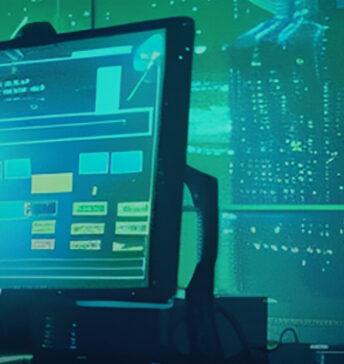In the modern world, the ability to adapt and innovate is crucial for businesses to stay competitive. A cornerstone of this digital transformation is code modernization – a process of upgrading outdated or inefficient codebases to leverage modern technologies and development practices. By embarking on a modernization project, organizations can unlock a wealth of benefits, including improved performance, enhanced security, and greater scalability.
However, the path to code modernization is not without its challenges. For organizations with extensive legacy code, the task can seem daunting. These systems, often built on outdated technologies and architectures, can be difficult to maintain, update, and integrate with newer systems.
To simplify the modernization process, this article is breaking down the complexities of code modernization, exploring the different strategies companies can employ to achieve their goals, and highlighting the factors they will need to consider when choosing their approach.
Understanding Code Modernization
Code modernization is the process of improving existing software code to enhance its functionality, performance, and maintainability. This involves a comprehensive overhaul of the source code, often necessitating a combination of strategies such as refactoring, re-architecting, and, in extreme cases, manual rewriting.
Refactoring refers to restructuring the existing code without altering its external behavior, aiming to improve code readability and maintainability. Re-architecting involves changing the underlying structure or design of the application, often to align with modern architectural patterns. Manual rewriting, while time-consuming and resource-intensive, might be necessary for severely outdated or problematic code.
Benefits of Code Modernization
Organizations may choose to invest in code modernization to address a variety of challenges. Outdated systems can hinder business agility, as they struggle to adapt to changing market conditions and customer demands. Additionally, legacy code often suffers from performance issues, security vulnerabilities, and high maintenance costs. By modernizing their codebase, organizations can reap the reward of several benefits, including:
- Improved performance and scalability: By leveraging modern programming languages, frameworks, and architectures, organizations can create applications that handle increased workloads more efficiently. This is increasingly important in a world where user expectations for speed and responsiveness are constantly on the rise.
- Enhanced maintainability and quality: Modern codebases are typically easier to understand, modify, and debug, reducing development and maintenance costs. By adopting these coding standards and best practices, organizations can create a more consistent and reliable application. This leads to increased productivity, allowing developers to spend less time troubleshooting and more time focusing on new, innovative features.
- Reduced security vulnerabilities: Legacy systems often have outdated security measures that leave them susceptible to cyberattacks. Modernizing the codebase allows organizations to incorporate the latest security practices and technologies, better protecting sensitive data and customer information.
- Easier integration with modern technologies: Modern applications are better equipped to integrate with modern technologies. This includes cloud computing, artificial intelligence, and other emerging trends. By modernizing their codebase, organizations can unlock new opportunities for innovation and growth.
Code Modernization Strategies
There are multiple approaches companies can consider to modernize their existing codebases. The optimal strategy depends on factors such as the codebase’s complexity, the organization’s resources, and desired outcomes.
Traditional Approach
Historically, code modernization has been a labor-intensive process requiring a great deal of time and effort. The traditional approach involves several steps:
- Identifying and prioritizing code for modernization: This step involves assessing the codebase to pinpoint areas that would benefit most from modernization. Prioritization is crucial to maximize the return on investment.
- Setting up a development environment: Creating an isolated environment for making changes is essential to prevent disruptions to the production system.
- Refactoring code: This involves improving code readability and maintainability without altering its functionality. It often requires a line-by-line examination of the code.
- Improving unit testing: Robust unit tests are crucial to ensure code quality during the modernization process.
- Migrating code to the cloud or containerizing applications: Moving applications to the cloud or using containers can improve scalability, performance, and flexibility.
While effective, the traditional approach can be both time-consuming and resource-intensive, especially for large codebases.
AI-Driven Approach
AI has emerged as a powerful tool to accelerate code modernization. By automating many of the manual tasks involved, AI can significantly reduce time and effort. Here’s how AI can be leveraged throughout the modernization process:
- Leveraging AI tools to analyze code and identify areas for improvement: AI can scan codebases to detect performance bottlenecks, security vulnerabilities, and opportunities for optimization.
- Using AI-powered refactoring: AI can automate code refactoring tasks, suggesting improvements and making changes automatically, freeing up designers to focus on more thinkable tasks.
- Utilizing AI for code conversion and generation: Developers can describe desired code functionality in natural language, and AI can generate corresponding code snippets.
- Employing AI to enforce coding standards and improve code consistency: AI can analyze code against predefined coding standards and suggest corrections, ensuring code quality and maintainability overtime.
By automating these aspects of code modernization, AI can dramatically speed up the process and reduce the risk of human error. However, human oversight is still essential to ensure the AI’s output meets the desired requirements.
Choosing the Right Modernization Approach
Selecting the right approach to modernization is the key to success. When making this decision, business leaders will need to consider several factors, including:
- Size and complexity of the codebase: Large, complex codebases often require a phased approach or the use of AI-powered tools to manage the modernization effort efficiently. Smaller, simpler codebases might be more amenable to a traditional, manual approach.
- Budget and resource constraints: Organizations with limited budgets and resources may opt for a more gradual modernization process, focusing on critical areas first. Those with ample resources can invest in more aggressive modernization strategies, including AI-driven approaches.
- Desired level of automation: If rapid modernization and reduced manual effort are priorities, an AI-driven approach can be beneficial. Organizations seeking more control over the process might prefer a traditional approach.
- Developer expertise: The skills and experience of the development team will influence the chosen approach. A team with strong AI expertise can effectively leverage AI-powered tools, while a team with deep knowledge of the legacy codebase might excel at a manual refactoring.
By carefully evaluating each of these factors, organizations can select the strategy that best aligns with their specific goals and circumstances, setting themselves up for future success.
Best Practices and Recommendations
Code modernization requires careful planning, execution, and ongoing maintenance. By leveraging industry best practices, organizations can increase their chances of a successful code modernization project and reap the benefits of modern software development.
Here are some best practices to guide your modernization effort:
Thorough Assessment is Key
Before embarking on any modernization project, a comprehensive assessment of the existing codebase is essential. This evaluation should identify dependencies, risks, and opportunities for improvement. Understanding the code’s architecture, functionality, and technical debt is crucial for developing an effective modernization plan.
Upskill Your Team
A successful modernization project requires a skilled team. Invest in training your team on modern programming languages, frameworks, and development methodologies. This upskilling will empower your team to effectively tackle the challenges of code modernization and build high-quality, future-focused applications.
Adopt a Continuous Modernization Mindset
Code modernization should not be viewed as a one-time project, but rather as an ongoing process. Technology is constantly evolving, and your codebase should adapt accordingly. By incorporating modernization into your development lifecycle, you can ensure that your applications remain competitive and resilient.
Prioritize Security
As you modernize your codebase, be sure to prioritize cybersecurity. Implement robust security measures to protect your application and its data from vulnerabilities. Stay updated on the latest security best practices and integrate them into your modernization plans.
Test Thoroughly
Thorough testing is essential throughout the modernization process. Develop a comprehensive testing strategy to identify and address issues early on. This will help ensure the quality and reliability of the modernized application.
Conclusion
Code modernization is a necessity for modern businesses. By transforming legacy systems into modern, agile applications, organizations can unlock new opportunities, improve operational efficiency, and enhance customer experiences.
While the journey may seem daunting, careful planning, strategic execution, and the right tools can make the process smoother – with AI tools significantly accelerating modernization efforts.
Remember, code modernization is an ongoing process. By adopting a continuous improvement mindset and staying up to date with emerging technologies, your organization can maintain a competitive edge in the digital marketplace.
To learn more about this topic, download our comprehensive guide to application modernization.


















